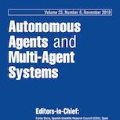In this talk I review where we stand regarding the engineering of multi-agent systems. There is both good news and bad news. The good news is that over the past decade we've made considerable progress on techniques for engineering multi-agent systems: we have good, usable methodologies, and mature tools. Furthermore, we've seen a wide range of demonstrated applications, and have even begun to quantify the advantages of agent technology. However, industry involvement in AAMAS appears to be declining (as measured by industry sponsorship of the conference), and industry affiliated attendants at AAMAS 2012 were few (1-2%). Furthermore, looking at the applications of agents being reported at recent AAMAS, usage of Agent Oriented Software Engineering (AOSE) and of Agent Oriented Programming Languages (AOPLs) is quite limited. This observation is corroborated by the results of a 2008 survey by Frank and Virginia Dignum. Based on these observations, I make five recommendations: (1) Re-engage with industry; (2) Stop designing AOPLs and AOSE methodologies ... and instead ... (3) Move to the "macro" level: develop techniques for designing and implementing interaction, integrate micro (single cognitive agent) and macro (MAS) design and implementation; (4) Develop techniques for the Assurance of MAS; and (5) Re-engage with the US.
翻译:在本次演讲中,我回顾了我们对于多试剂系统的工程现状。既有好消息也有坏消息。好消息是,在过去十年里,我们在多试剂系统的工程技术方面取得了相当大的进展:我们有良好的、可用的方法和成熟的工具。此外,我们看到了广泛的示范应用,甚至开始量化代理技术的优势。然而,工业对AAMAS的参与似乎正在下降(按会议行业赞助量衡量),2012年AAMAS的工业附属服务员数量很少(1-2 % )。此外,我们审视了最近在AAMAS上报道的代理的应用,Oriented软件工程(AOSE)和Oriented编程语言(AOPLs)的使用非常有限。2008年Frank和Virginia Dignum的一项调查的结果证实了这一点。基于这些观察,我提出了五项建议:(1) 与工业重新接触;(2) 停止设计AOPLs和AOSE方法.,而代之.(3) 向“Macro”一级移动:开发设计和执行互动的技术,将MAS和MAS的宏观设计(发展)和重新认识剂(发展)(5)。




